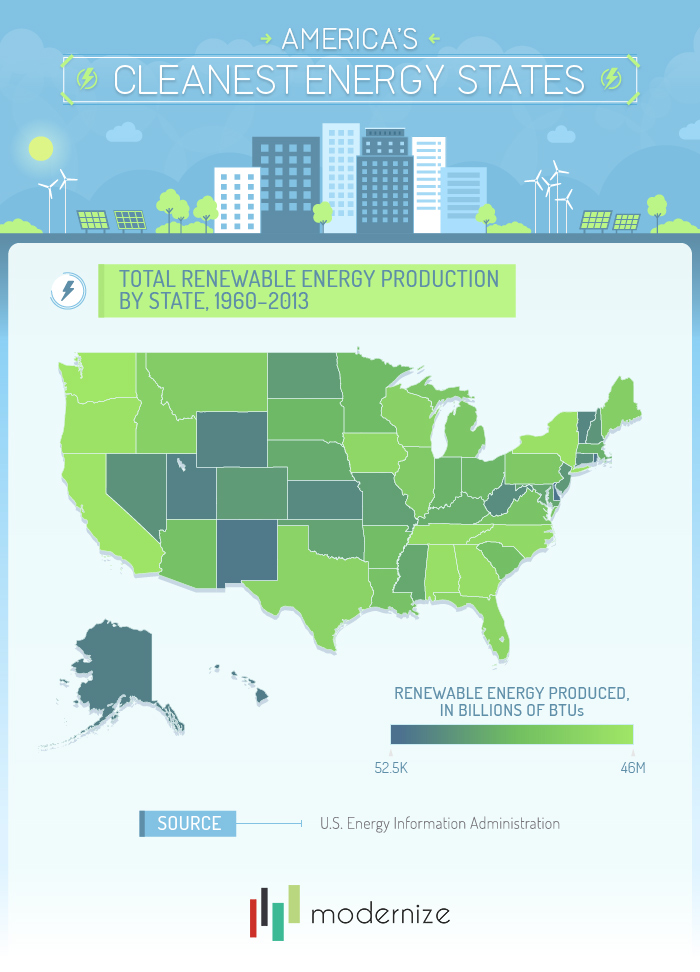What is the cleanest energy state?

As the world grapples with the challenges of climate change and environmental degradation, the search for clean and sustainable sources of energy has become increasingly important. In this article, we will dive into the concept of clean energy and explore the factors that determine the cleanest energy state. We will also examine the initiatives undertaken by various states to promote clean energy and discuss the future outlook of this rapidly evolving field.
- The Importance of Clean Energy
- Types of Clean Energy Sources
- Advantages and Disadvantages of Clean Energy
- Factors to Consider in Determining the Cleanest Energy State
- Case Studies: Clean Energy Initiatives in Various States
- Policy and Legislative Frameworks Promoting Clean Energy
- Future Outlook: Trends and Innovations in Clean Energy
- Conclusion
- Frequently Asked Questions
The Importance of Clean Energy
Clean energy refers to power sources that have minimal negative impact on the environment and human health. Unlike traditional sources like coal and oil, clean energy technologies produce little to no greenhouse gas emissions, reducing the overall carbon footprint. The transition to clean energy is crucial in mitigating climate change, improving air quality, and ensuring a sustainable future for generations to come.
Types of Clean Energy Sources
There are several types of clean energy sources that are being harnessed around the world. These include:
- Solar Power: Solar panels convert sunlight into electricity, providing a renewable and abundant source of energy.
- Wind Power: Wind turbines harness the power of wind to generate electricity, offering a clean and renewable option.
- Hydroelectric Power: By utilizing the energy of flowing or falling water, hydroelectric power plants produce electricity without emissions.
- Geothermal Power: Geothermal energy utilizes the heat from the Earth's core to generate electricity, offering a reliable and constant source of power.
- Biomass Power: Biomass energy is derived from organic materials such as agricultural waste, wood, and dedicated energy crops, providing a sustainable alternative to fossil fuels.
Advantages and Disadvantages of Clean Energy
Clean energy has numerous advantages over traditional energy sources. It reduces greenhouse gas emissions, improves air quality, and helps to diversify energy supplies. Additionally, clean energy technologies are becoming more cost-effective and can create jobs in the renewable energy sector. However, there are also challenges associated with clean energy, such as intermittent power generation in the case of solar and wind energy, and the initial high costs of infrastructure development.
Factors to Consider in Determining the Cleanest Energy State
When determining the cleanest energy state, several factors come into play:
- Renewable Energy Capacity: The percentage of energy derived from renewable sources is a key indicator of a state's commitment to clean energy.
- Energy Efficiency Programs: States that prioritize energy efficiency initiatives demonstrate a commitment to reducing energy consumption and promoting sustainable practices.
- Carbon Footprint: A state's carbon emissions per capita provide insight into its environmental impact.
- Legislation and Policies: The presence of supportive legislation and policies that promote clean energy can significantly influence a state's ranking.
Case Studies: Clean Energy Initiatives in Various States
Several states in the United States are leading the way in clean energy initiatives:
- California: With its ambitious renewable portfolio standard and strong incentives for solar power, California has emerged as a frontrunner in clean energy adoption.
- Texas: Known for its vast wind resources, Texas has made significant investments in wind power, making it a leader in renewable energy capacity.
- New York: New York has implemented policies to promote energy efficiency and has set a goal to generate 70% of its electricity from renewable sources by 2030.
Policy and Legislative Frameworks Promoting Clean Energy
Governments play a crucial role in promoting clean energy through policy and legislation. Some examples of frameworks that support clean energy include:
- Renewable Portfolio Standards: These policies require utilities to obtain a certain percentage of their energy from renewable sources.
- Feed-in Tariffs: Feed-in tariffs provide incentives for individuals and businesses to generate their own clean energy and sell any excess back to the grid.
- Net Metering: Net metering allows consumers to receive credit for the excess electricity they generate from their clean energy systems.
Future Outlook: Trends and Innovations in Clean Energy
The clean energy sector is experiencing rapid growth and innovation. Some emerging trends include:
- Energy Storage: Advancements in energy storage technologies, such as batteries, are enabling the integration of intermittent renewable energy sources into the grid.
- Electric Vehicles: The adoption of electric vehicles is increasing, leading to a greater demand for clean energy to power these vehicles.
- Smart Grids: Smart grids utilize advanced digital technology to optimize energy distribution and consumption, increasing efficiency and reducing emissions.
Conclusion
The cleanest energy state is determined by various factors, including renewable energy capacity, energy efficiency initiatives, and supportive legislation. States like California, Texas, and New York are leading the way in clean energy adoption and have implemented innovative policies to promote sustainability. As the world continues to prioritize clean energy, trends such as energy storage and electric vehicles will shape the future of the industry.
Frequently Asked Questions
1. What defines a state as "cleanest" in terms of energy?
A state is considered the "cleanest" in terms of energy based on factors like renewable energy capacity, energy efficiency programs, and carbon footprint.
2. How is the cleanest energy state determined?
The cleanest energy state is determined by evaluating the state's renewable energy adoption, energy efficiency initiatives, and environmental impact.
3. Which states are currently considered the cleanest in terms of energy?
California, Texas, and New York are among the states that are leading in clean energy adoption and have implemented significant initiatives to promote sustainability.
4. What are some initiatives that these clean energy states have implemented?
These clean energy states have implemented initiatives such as renewable portfolio standards, feed-in tariffs, and energy efficiency programs to promote clean energy adoption and reduce carbon emissions.

Leave a Reply